|
When researching in our archives, I came across the following remarks and prayer for the dedication of Semmes Heritage Park. These words express so eloquently the reason for preserving our history, our landmarks and continue to be relevant for today's society. Personal note! (Charles Couey and I grew up in Semmes and Graduated from Semmes High School in 1961.) 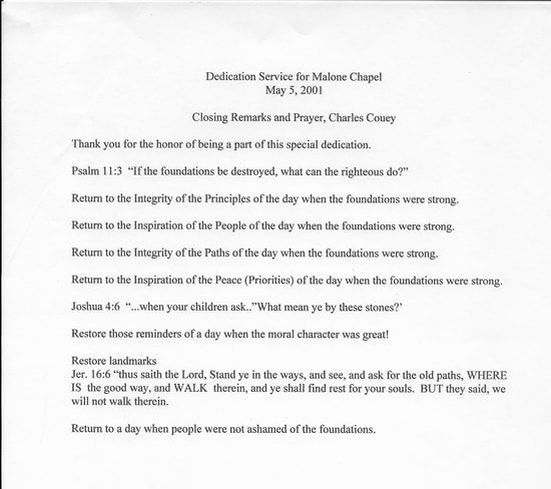
0 Comments
Semmes First School
To enable the Alabama Territory to become a state, the Enabling Act was passed by the Senate and House of Representatives of the United States of America on March 2, 1819. In section six, the act required in every township, the sixteenth section of land to be set aside for educational purposes. Semmes first school, a log cabin, was built in 1887 on the townships sixteenth section of land. The school served as the meeting place for church and other community activities, as was the custom in Alabama in this period of time. The school moved several times as the population shifted. The center of town shifted from Moffett Road, (AL42) (US98) to near the Railroad. Thomas Jefferson Howell saw the need for the school to be closer to the center of town and gave one half acre to build a new school and one half acre to build a church. In the deed (Mobile County Probate DB102 Pg. 019 filed 11/19/1902), he stipulated that a school always remain on the property or the property would revert back to the Howell Family. Timber had become big business and there were saw mills making it possible to use sawed lumber instead of logs to build the school, church and homes. In the Minute Book, Board of School Commissioners of Mobile County, Sept 7, 1898-November 7, 1904 “County School Committee recommended the erection of a new school house at Semmes, Alabama at a cost not exceeding $350. (Plan#3) so much thereof as may be needed to be used. The reports were adopted, carrying the appropriation for the Semmes School. “Page 135 July 9, 1902” The Teacher at Semmes, C. Pitard received $35.00 per month. June 22, 1903 The Committee Recommend an appropriation of $35.00 for a well and well house at Semmes School, Superintendent to have the same provided. Oct. 14, 1903 Minutes, Board of School Commissioners of Mobile Count 1902-1909 p.3 Recommend addition to Semmes School of 10 feet, Supt. to invite bids when attendance shall call for such. Page 3, 1904 Recommend that the bid of C.F. McCreary to erect the addition to Semmes School in the sum of one hundred ten dollars to be accepted. December, 1902 Minutes Book, Board of School Commission of Mobile County, Sept. 9. 1909- 9/10/13 County School Committee recommends that the following schools be painted…..Semmes…..Page 155, June 14, 1911. Minute Book, Board of School Commissioners of Mobile County, Nov. 9, 1904-August 1909 Recommended for election ---Eva Belle Jones-Semmes, 1906 page 54 Alice Pearson-Semmes, July 1908, page 143 In 1917 the 1902 school was moved across the road to sit besides the newly constructed stucco building. Other buildings were moved to sit by the new stucco building. The old Semmes Post Office and Allentown School were moved to this location. Semmes School, Powelltown, Allentown and Crawford (Morris Hill) Community Schools were consolidated into Semmes School. This was the beginning of Semmes becoming a regional School. In the 50’s Tanner Williams, Wilmer and Forest Hill elementary became a part of Semmes High School. The three major high schools in Mobile Co. at this time were Murphy, Vigor, and Semmes. Semmes is the regional center for education is west Mobile County.
Preserving Semmes Educational History The Story Behind Semmes Heritage Park In January 1994 Robin Wulff was at the school board office and overheard that the one room Semmes school was going to be renovated or torn down. She immediately alerted Elizabeth Dodd. Mrs. Dodd called Julane Greenlee and Rita Durant and together they went to see Mrs. Katherine Montgomery, the principal of Semmes School to present the idea of preserving the one room school. Mrs. Montgomery was very receptive, and encouraging. Theodore had recently restored an early school, so Julane and Mrs. Dodd made an appointment with Carolyn Dumas and Kathy Nelson, who had led the restoration at Theodore school. They gave us a tour, copies of their corporation history and grant applications. Marion Howell and Mrs. Dodd went to the Courthouse to research the original deed and found the deed in Book 102, Page 179 and obtained a copy of the deed. The deed revealed that In 1902 Thomas Jefferson Howell donated to the Mobile Co. Public School Board one-half acre of land to build a new school and one half acre to build a new church to sit beside the school. Bobby Nelson, who was in charge of new school board construction, Mark McDonald, Director of the Mobile Historic Development Commission were contacted and asked to inspect the school to see if it might be restored. “We were assured our little treasure was well worthy of the efforts of restoration.” said Mrs. Dodd. Julane Greenlee contacted Jay Grelan, who wrote an article, May 13, 1994 in the Mobile Press, on our historic school house announcing a meeting May 22, 1994 to form a committee for the purpose of preserving the little school house. On May 22, 1994, a group of sixty-seven citizens and former students of Semmes School met together in the Semmes School cafeteria. Donations were collected in the amount of $370.00. Semmes Women’s Club served refreshments. May 25, 1994, three days after the first meeting, an organizational meeting was held in the Semmes School Cafeteria and the name of Alumni & Friends of Semmes School was chosen. Officers elected were President Joseph E. Shumock, Vice-President Norville H. Couey, Treasurer- Mary Waters Hopkins, Secretary Kathryn K. Shumock, and Corresponding Secretary Linda Hudson Davis. The Board of Directors elected was Joe Shumock, Mildred Wiggins, Sara Wilson, Catherine T. Montgomery, Linda Hudson Davis and Elizabeth P. Dodd. On July 18, 1994 Alumni & Friends of Semmes School was incorporated as a 501(C) 3 not for profit organization and on August 25, 1994 the 1902 one room school was declared an Alabama Historical Landmark, as the oldest continuous in use school in Alabama. A lease was obtained from the Mobile Co. Public School System for the original site. The schoolhouse was donated by the Mobile County Public School System to Alumni & Friends of Semmes School, Inc. and returned to its original location in 1998 now known as Semmes Heritage Park. The Restoration was completed in 1999 and a dedication ceremony and celebration took place in May 5, 2001. Goals and Activities The goals of Semmes Heritage Park are to Promote Education through hands on history lessons, positively affect the quality of life and growth in the area, and remember our past as we look to the future. Heritage Day began in 2003 and living History lessons began in the fall of 2004 with attendance of second graders from E.R. Dickson and in the Spring Dr. Turner’s History of Education TE517, University of Mobile. Field trips continue today with students coming from public, private Christian and home schools. Additional Events are the Old Fashioned Christmas Program which began in 2002, and the Camellia Festival began in 2013 to celebrate our Nursery History. Looking to the future Semmes Heritage Day, 2018 brought an exciting exhibit by MGM High School Robotic team and the Electric Car team showcasing the creative work of our high school students into the future. An additional building in the Park is a replica of the 1902 Mt. Pleasant Church, now known as Malone Chapel. A model of the church was built from a photo before the construction of the replica. The bell in the belfry is the original 1902 church bell. Mt. Pleasant church later became Semmes First Baptist. In 2013 a log cabin, reminiscent of early life in Semmes was added. It was built and delivered by Trophy Amish Cabins. It is furnished with a rope bed (Replica); donated period furniture 1900’s pump organ, displays of kitchen utensils tools and other items. Semmes Pioneer settlers came by wagon, cut down pine trees and built their own log cabin homes. Jeanette L. Byrd Early Pioneer families often migrated together to establish new settlements. These Early Settlements were often called by the family name. Allentown was a settlement that was named after the Allen Family and was a town with a church, school, blacksmith shop, store, and cemetery. The Bureau of Land Management records indicate that James M. Allen bought 163.75 acres and James G. Allen bought 160.05 acres for cash on April 24, 1820 in Mobile County, which became Allentown. Allentown was located near the area of Wulff Road and Howells Ferry Road which is now known as Semmes.
Allentown was a settlement before Mobile County had road districts or a method to collect revenue. The Acts of the general Assembly of the State of Alabama on December 4, 1888 divided Mobile County into three revenue and road districts. The districts were further divided into Precincts. The Second District precincts were Citronelle (1), Mount Vernon (2), Creola (5), Mauvilla and Chunchula (6), Albritton (7), Carver’s (8),Steeley’s Store (20). Allentown was in the Albritton precinct. The Register Report lists James H. as being born on Nov. 1, 1811 in South Carolina. He was the first Presbyterian Methodist Minister in Alabama. He died on December 22, 1893 and is buried in Allentown Cemetery. On May 20, 1862, James B. Allen, homesteaded 168.62 Acres: James H. Allen, 80.8 acres; Sarah M. Whiting, and James H. Allen, 161.19. Allen’s born in Allentown
Early roads in Alabama were along Indian trails. One such trail used by the settlers and the Indians was close to Allentown Cemetery. The story has been passed down from generation to generation that the first person buried in Allentown Cemetery was an Indian that died on the trail. No one even knew his name. The Indians and the settlers were friendly to one another, and once a year the Indians would use this trail to travel down to the sea to get salt. They would borrow iron pots from the settlers, boil the salt water and by the process of evaporation salt was left in the pots. When returning, the pots were returned to the settlers with a portion of salt for the use of the pots. Helen Waltman Caldwell, the great granddaughter of Benjamin Howell, said “the salt looked dirty but was good salt”. Today we know this salt as sea salt. Salt was a very important product needed by early settlers and the Indians and even sometimes used for money to trade with. All that remains of the Allentown Settlement is the Allentown Cemetery. Many descendants of the Allen's are living in the area. |
SemmesPreserving our History Archives
November 2023
|
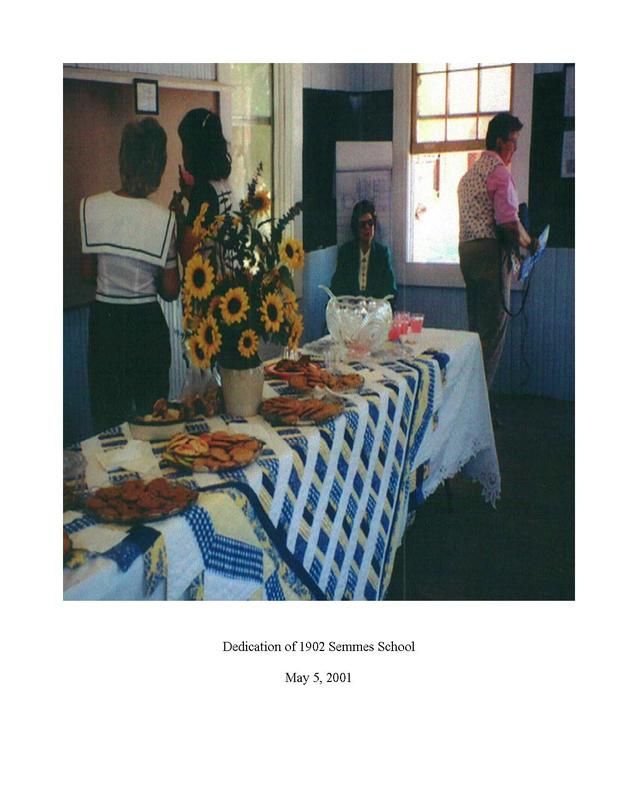
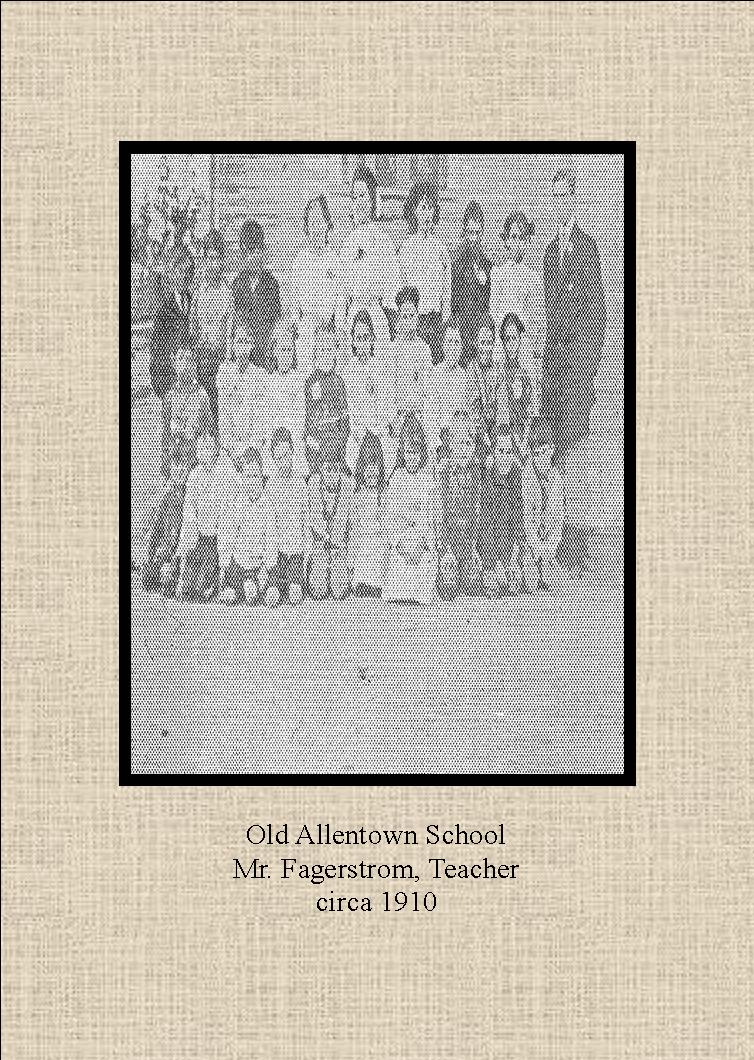
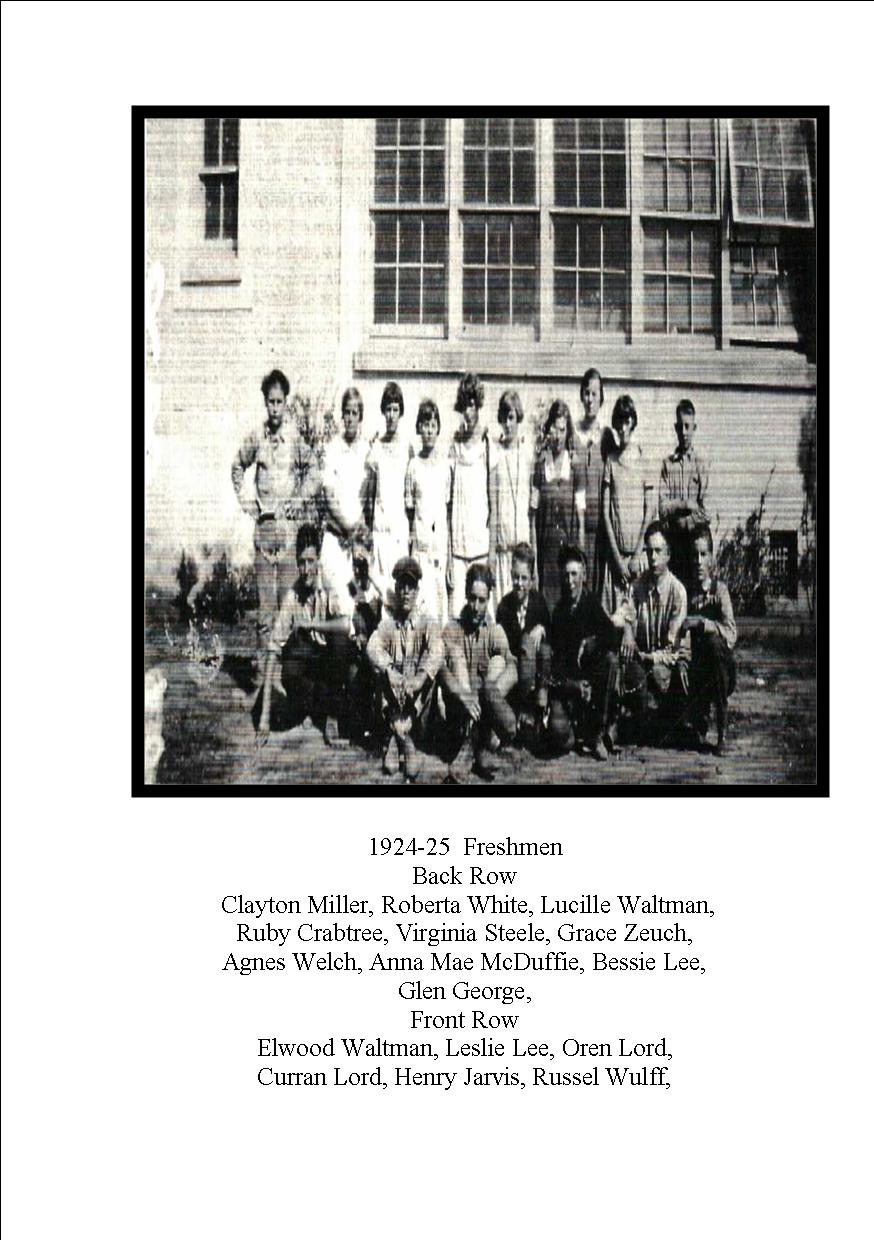
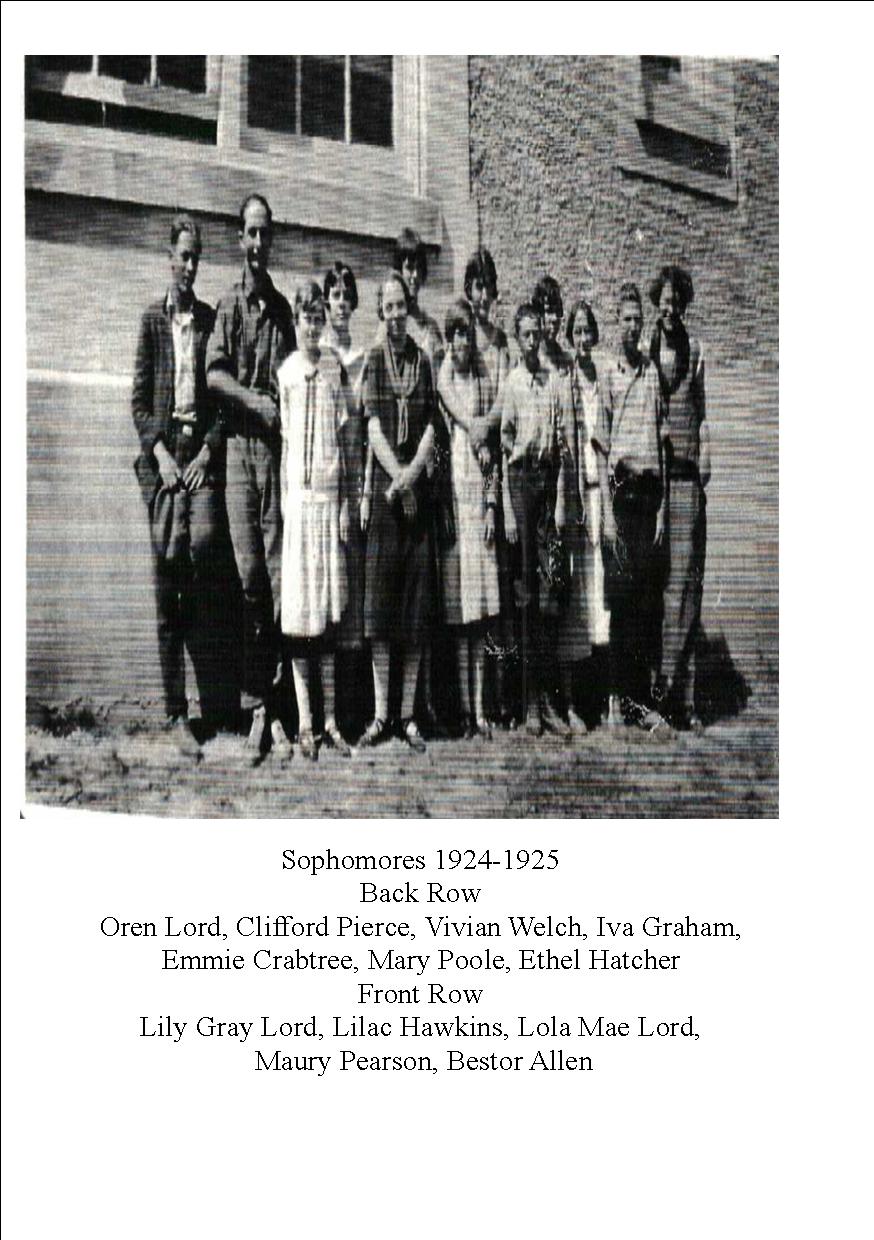

 RSS Feed
RSS Feed